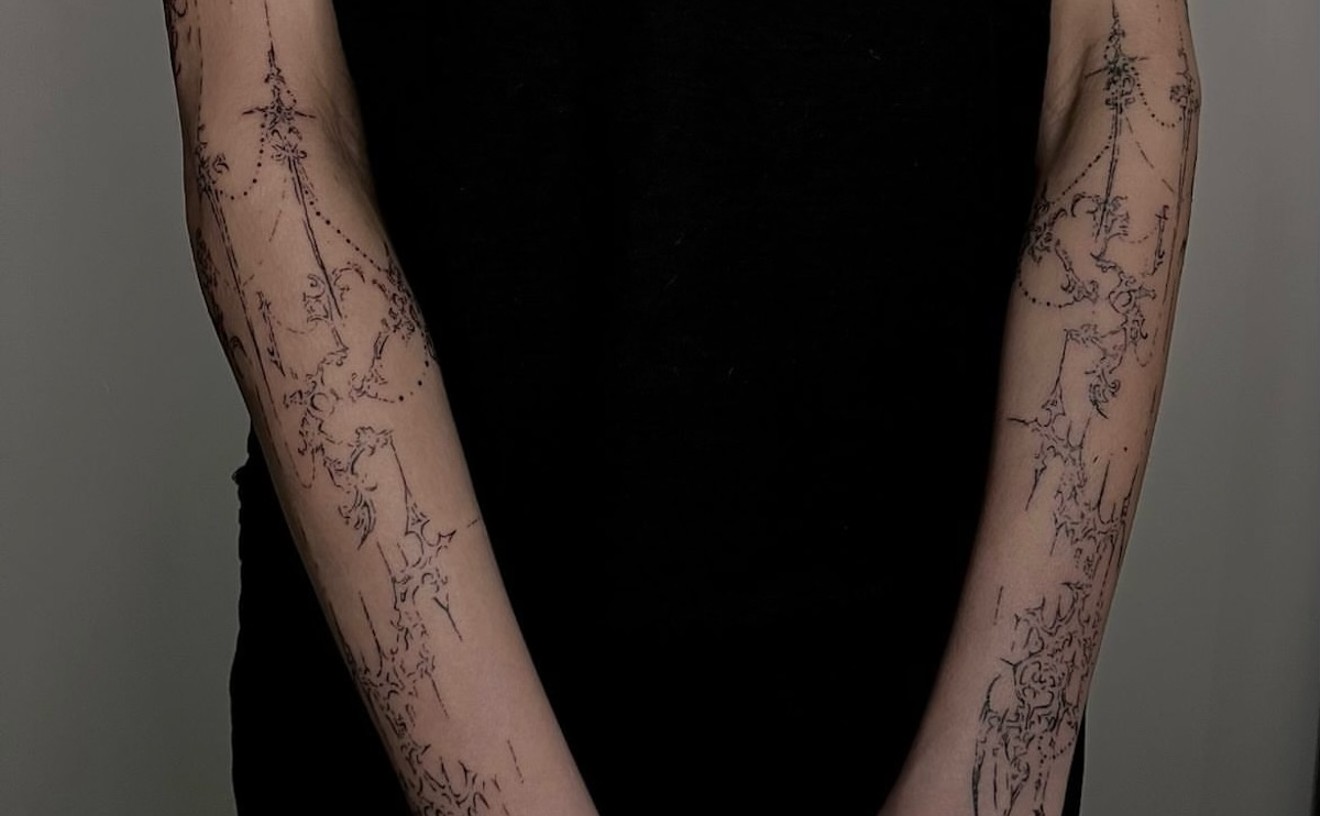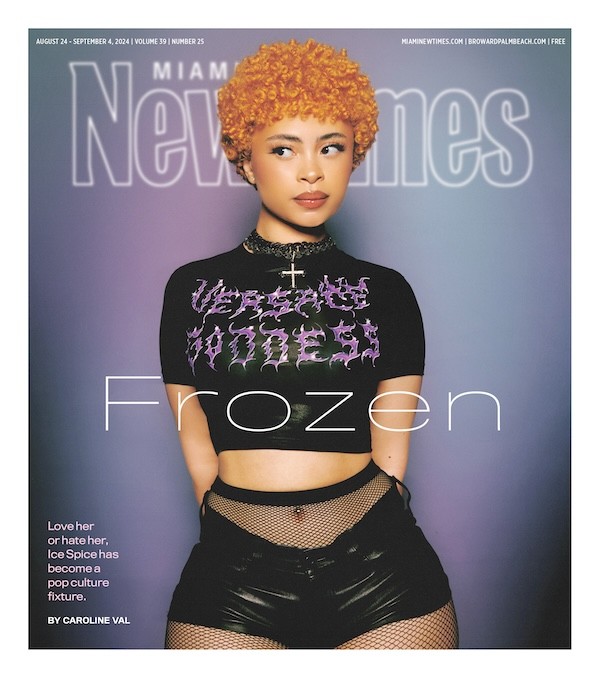In 2006, Oliver Sanchez transformed the implausible into reality. "I tarred and feathered a classic Rolls-Royce Corniche convertible," the unpretentious and soft-spoken 55-year-old Cuban-American recalls. "The hardest part of the job was finding the right type of feathers, but we finally settled on goose down after going through a bunch of samples ranging from plain chicken feathers to the more exotic and ornate."
Sanchez defiled the Rolls for a Wynwood exhibition by two Scandinavian artists, Michael Elmgreen and Ingar Dragset, who aimed to erect a monument to art-world avarice. In the years since, he has become the go-to guy for making artists' visions a reality. He has created works for big-time locals such as Daniel Arsham, Bert Rodriguez, Naomi Fisher, Bhakti Baxter, and Typoe, as well as established international names.
No one would have predicted Sanchez would play such an important role in the art world. Three weeks after he was born in Camagüey, Cuba, dictator Fulgencio Batista's soldiers executed his father. When he was 9, he moved to Miami with his mother, Martha, and older brother Adolfo. "I grew up in a house about ten blocks from here," the artist recollects as he sits at a small table covered with playing cards and dominoes inside his new studio at North Miami Avenue and NW 39th Street. The place also houses Swampspace, the alt-haven Sanchez founded nearly a decade ago to showcase emerging and underrepresented artists.
Nearby hangs an ornately framed painting of a Spanish bullfighter and another showing Clark Gable staring out from behind a frame shaped like a stopwatch. In the background, Rubén Blades belts out merengue on the radio.
Sanchez attended Miami Edison Senior High and later earned an architecture degree from Miami Dade College. "Miami has changed drastically since my family first moved here," he says. "We were a cultural desert in those days, and I felt I had to leave town if I wanted to become a serious artist."
So in May 1977, Sanchez followed his brother Adolfo, who was also a budding artist, to Manhattan. They arrived as the city reeled from the Son of Sam murders and were just in time for New York City's famous blackout. The brothers found graphic design jobs with Condé Nast and also worked as freelance designers and illustrators for high-powered Madison Avenue advertising agencies and Wall Street brokers.
By the '80s, Sanchez was working as an art director for High Times during the day and creating pie-chart presentations in the afternoons for brokerage firms. "My day often began by visiting growers to pick up these gorgeous buds of pot," he recalls. "I would then deliver them to my photographers to shoot for the magazine's centerfold. Later, before I returned them, I would pinch a sample and go back to the studio to work on the presentations for Wall Street."
Sanchez and his brother also immersed themselves in the city's club life. It was the height of the legendary East Village art scene. "Keith Haring, Fab Five Freddy, Patti Astor, Jean-Michel Basquiat, Madonna, Kenny Scharf, and so many others were close friends," he says. "But when the AIDS epidemic hit, I lost 28 friends in three short years, including my brother Adolfo."
Then Sanchez pulls out a pile of old photos. One shows him partying with Scharf and Haring during Carnival in Brazil. In another, Sanchez's wife, Min Thometz -- whom he met at a gallery in SoHo in 1979 -- breastfeeds their baby, Lucia, while nestled between actress Debi Mazar and Madonna.
In 1992, when Scharf decided to move his family and art practice to Miami Beach, the couple and their newborn daughter also relocated here.
Since then, Sanchez has watched Miami explode from a cultural backwater to a global art center that's earned a reputation amplified by the presence of Art Basel.
Almost immediately upon returning home, Sanchez began helping fellow artists fabricate their work. One of his oddest projects was for New York's Peter Coffin, who hired him to hollow out giant oak logs as part of a bizarre visual elegy on the origins of the universe.
"I told him it was illegal to cut them down here, so we found a tree guy in Ocala who cut two oaks down and transported the massive trunks, that each weighed more than a car, to Hialeah, where I worked on them with four assistants," Sanchez says. "Coffin wanted us to hollow out the trunks, but they were still green, and we had to use torches and chain saws, and there was a mountain of sawdust around us.
"The worst part was when the fire department showed up because of all the smoke. Coffin ended up putting disco lights inside the hollowed stumps for an exhibit and calling them 'Cosmic Logs' or something similar."
Sanchez says he never set out to become a conduit for fellow artists to realize their works. But he began fabricating as a practical necessity.
"Growing up, there was not a hammer in my house, but I loved building things, and that's why I studied architecture," he says. "Later, when Adolfo and I began showing work in New York, I began making the frames for our paintings and doing the sculptural constructions for our installations. Soon I started building these elaborate, giant wooden frames for Kenny Scharf's wild paintings and also began carving Styrofoam elements for his installations."
Sanchez says he was humbled by top painters of the era and felt a calling to collaborate. "Making those ornate and crazy frames back then made me realize that in a way I was creating architecture to house the paintings. The frames were a three-dimensional way to integrate two-dimensional works into the 3D world we inhabit."
He worked as Scharf's studio assistant for 15 years. He says that mastering Styrofoam while working on the great artist's sculptures gave him an appreciation for the material's distinct properties.
"Styrofoam is unusual to work with because it's composed of 98 percent air, so it's only 2 percent away from being conceptual," he observes. "At its core, it can be a real challenge to work with."
Since then, he has had a hand in design, building, and installation from Moscow to London, Barcelona, Tokyo, and São Paulo. A recent example is a Naomi Fisher project at Fairchild Tropical Botanic Garden. "She had to create a series of ornamental friezes for the exterior windows and doors for a new grand hall at the gardens," he recalls. "I shepherded her through the entire process from A to Z, including attending meetings during the proposal stages to the concrete casting of her designs of flora and fauna and everything in between."
Decades of work has taken a toll on his body. A few years ago, he underwent surgery for a collapsed lung. "The only issue for me is my health and the drawbacks of working with materials that are toxic hazards."
On a recent weekday afternoon, he worked on a sprawling installation of gold skulls and hearts for local street-art icon Typoe, who was recently commissioned by Royal Caribbean to decorate the walls of one of its ship's casinos. "I work on a lot of cruise ship projects for local artists and recently traveled to Papenburg, Germany, with Daniel Arsham to visit the shipyard where the boats are made to plan how to best situate his sculptures," Sanchez says.
He notes that every year he turns down more and more work as the clamor to make an impression during Art Basel nears. "A lot of people don't understand that what they come up with in Photoshop can be impossible to achieve in real life. Every year as Basel gets closer, people come to me with these increasingly outrageous and unrealistic proposals that you wouldn't believe."
Send your story tips to Cultist at [email protected].
Follow Cultist on Facebook and Twitter @CultistMiami.











